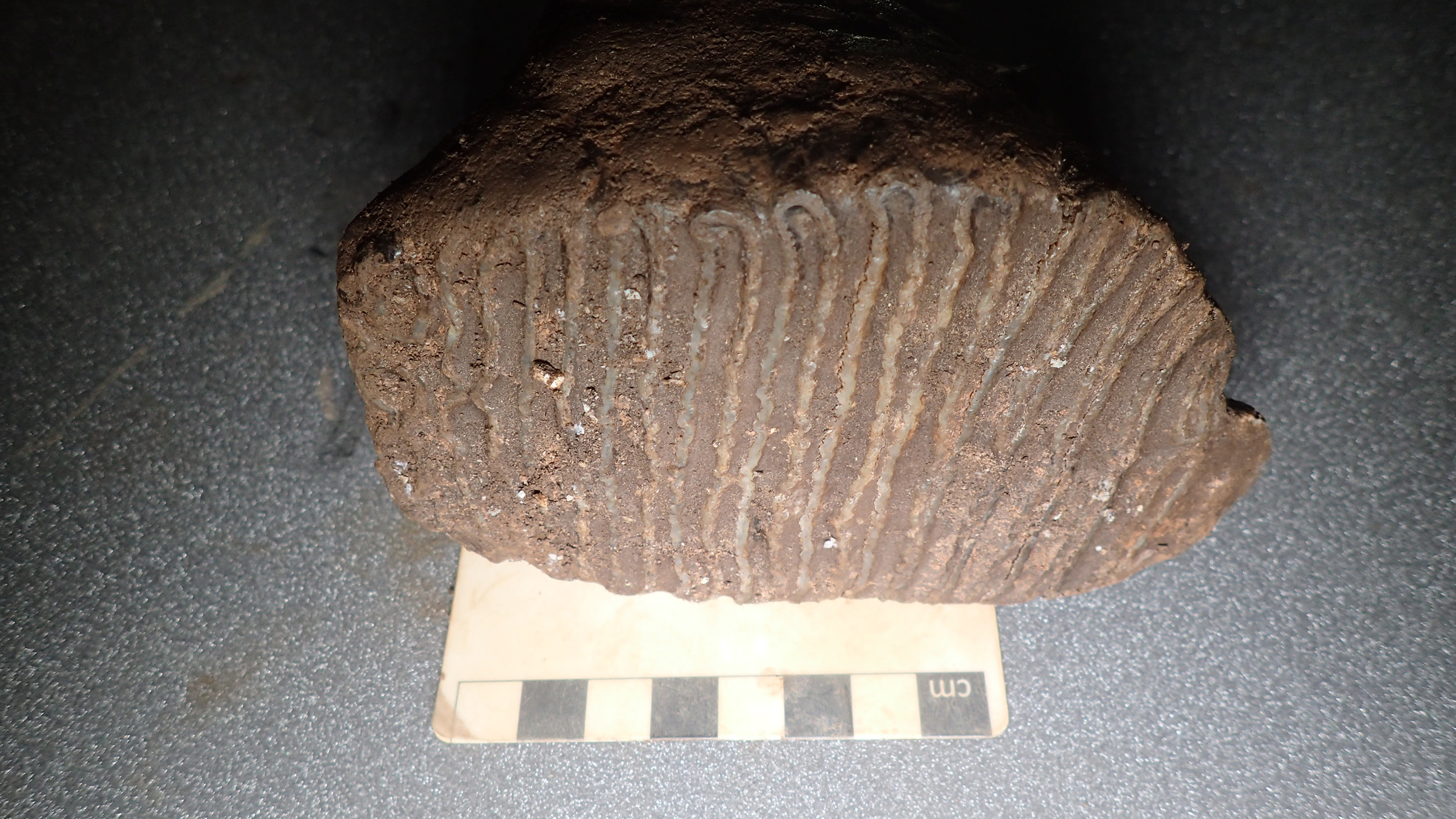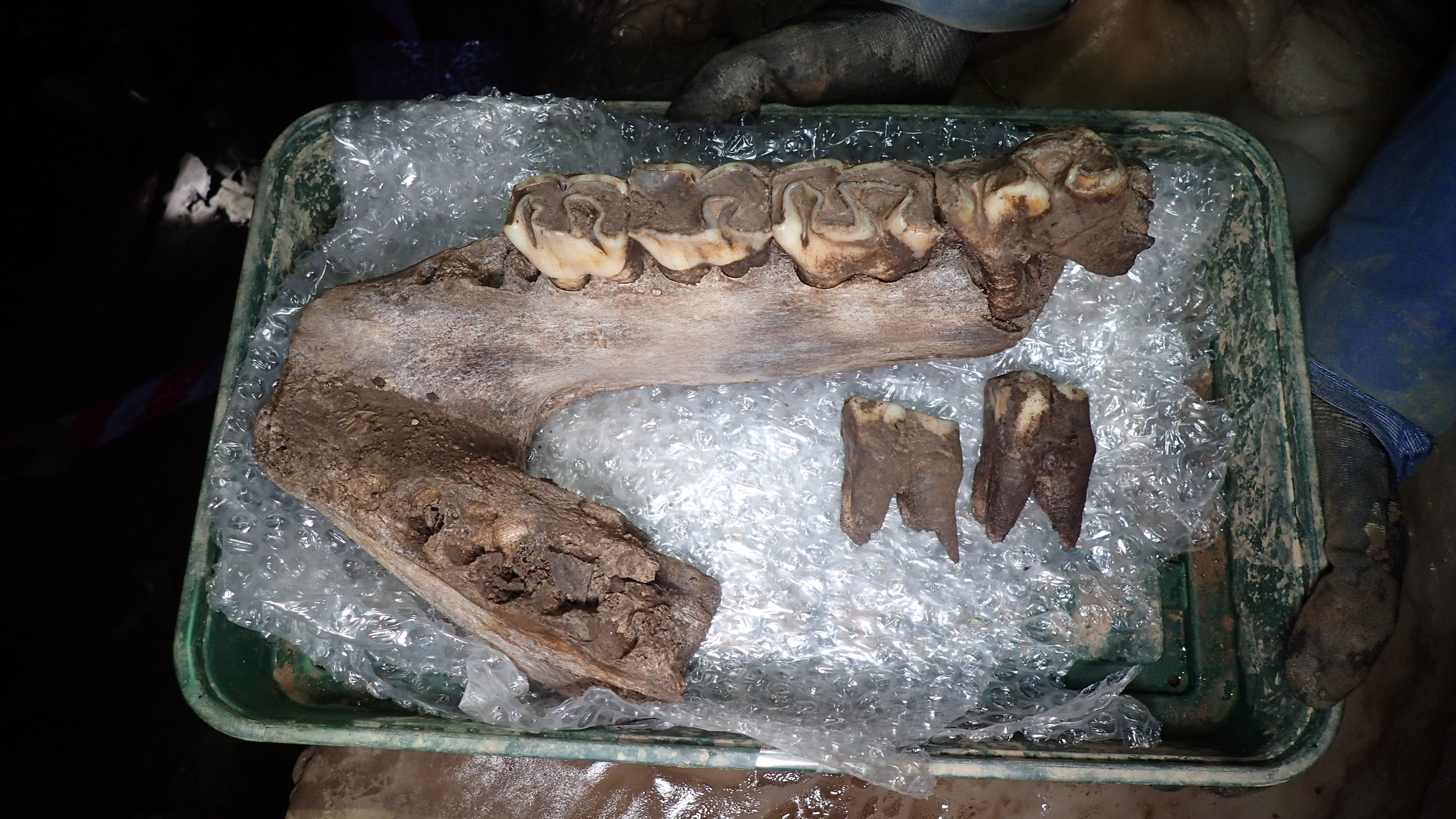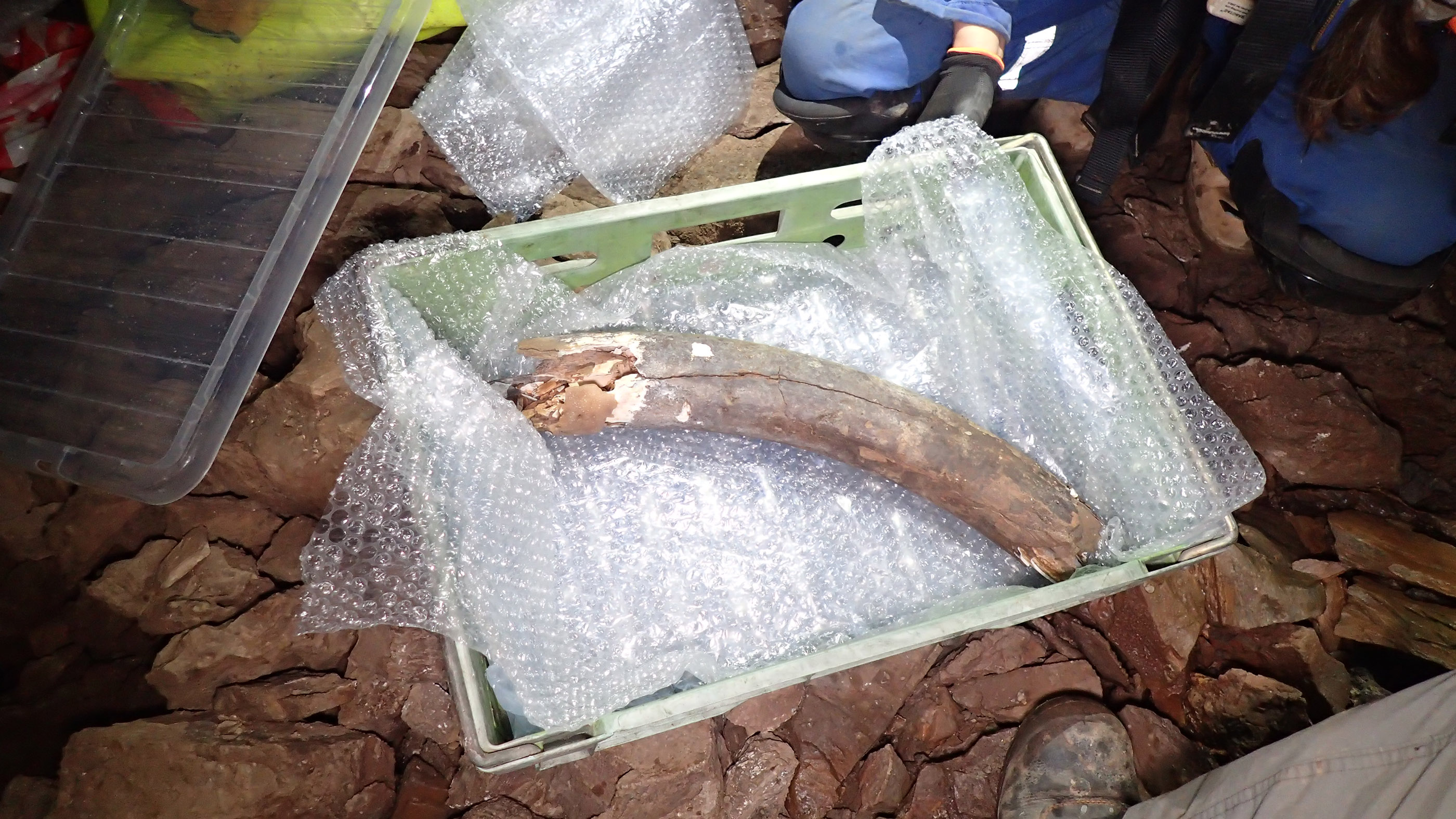Ice age mammoth, woolly rhino and hyena bones uncovered in English town
The bones were found during a construction project.

The bones of a woolly mammoth, woolly rhinoceros, hyena and wolf recently discovered in an English town are thought to date to the last Ice Age.
The animal remains turned up during the construction of a new town called Sherford, which is located in Devon county, near Plymouth, BBC News reported. Construction on the 5,500-home town began in 2015, and the developers called in archaeologists to help with the project from the outset.
While excavating a cave in the area, the team discovered the tusk, molar tooth and other bones of a woolly mammoth, as well as the incomplete skull and lower jaw of a woolly rhinoceros, according to a statement from the town's developers, the Sherford Consortium. They also found a near-complete wolf skeleton; the partial remains of a hyena, horse, reindeer, mountain hare and red fox; and the bones of various small mammals, including bats and shrews.
An examination of the remains suggests they date to the Middle Devensian period, which took place about 60,000 to 30,000 years ago. It's still unclear whether all the animals found in the cave lived during the exact same time frame or accumulated in the cave over a more extended period of time, according to the statement.
Related: Mammoth resurrection: 11 hurdles to bringing back an ice age beast



During the Middle Devensian, "Devon then would have been a bitterly cold and dry place to be, even in summer," Victoria Herridge, an expert in fossil elephants at The Box, a new museum, told The Natural History Museum newsroom. "However, it was also a huge open grassland, capable of supporting vast herds of cold-tolerant animals like the woolly mammoth, the woolly rhino and reindeer, as well as the big carnivores like hyena and wolf that preyed upon them."
"This is a major discovery of national significance — a once-in-a-lifetime experience for those involved," Rob Bourn, lead archaeologist on the project and managing director of Orion Heritage, an independent archaeological consultancy, said in the statement. "To find such an array of artefacts untouched for so long is a rare and special occurrence. Equally rare is the presence of complete or semi-complete individual animals."
Get the world’s most fascinating discoveries delivered straight to your inbox.
The project's archaeological team has now completed the excavation of the animal remains, and the bones are now being examined more closely, off-site, according to the statement. Sediment from the field site will also be examined. The animal remains will be displayed at The Box after the archaeological team has finished studying the bones.
The Sherford Consortium announced that it will preserve the field site and that no construction will take place above or in the cave.
Originally published on Live Science.

Nicoletta Lanese is the health channel editor at Live Science and was previously a news editor and staff writer at the site. She holds a graduate certificate in science communication from UC Santa Cruz and degrees in neuroscience and dance from the University of Florida. Her work has appeared in The Scientist, Science News, the Mercury News, Mongabay and Stanford Medicine Magazine, among other outlets. Based in NYC, she also remains heavily involved in dance and performs in local choreographers' work.


